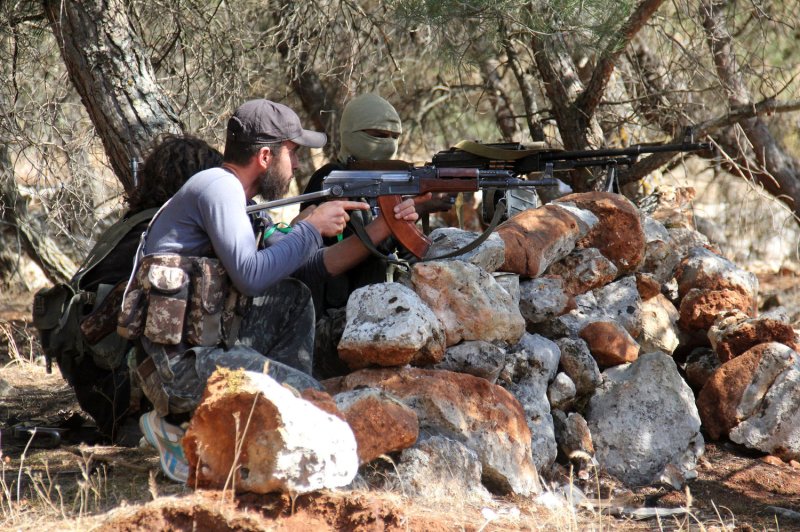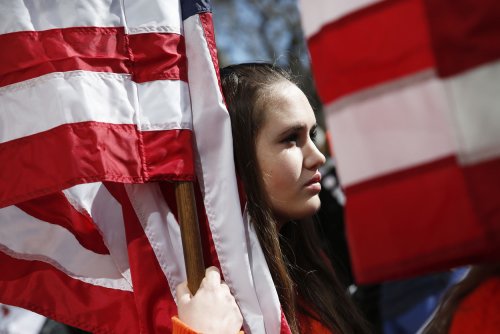Fighters from a coalition of rebel groups called "Jaish al Fateh", also known as "Army of Fatah" (Conquest Army), are seen during fighting with the Syrian army near Psoncol town, in the countryside of Idlib province, Syria, on June 5, 2015. On August 3, 2015, the Pentagon said it had provided close air support in defense of U.S.-trained rebels known as the New Syrian Force, who, alongside moderate fighters with the Free Syrian Army, came under attack by a group of suspected Nusra Front militants in northern Syria. Photo by Omar Haj Kadour/ UPI |
License Photo
ALEPPO, Syria, Aug. 4 (UPI) -- Coalition airstrikes were used for the first time to defend U.S.-trained rebels operating in Syria, according to officials.
The close air support came in defense of the New Syria Force, which has been equipped and trained by the United States to combat Islamic State militants, according to Navy Capt. Jeff Davis, a Pentagon spokesman.
Davis told reporters Monday the NSF, alongside allies in the Free Syrian Army, came under attack in northern Syria by a group of about 50 militants that looked "an awful lot like al-Nusra," referring to the Nusra Front, al-Qaida's affiliate in the country.
Davis noted that U.S. offensive operations in Syria were limited to attacks against IS fighters but added that airstrikes would be used to defend the NSF from other groups, since it could "potentially face a broader range of threats."
The airstrikes come days after Nusra Front militants are reported to have captured several members of a U.S.-trained force known as Division 30, including their leader.
Quoting a Division 30 statement, the BBC reports Nusra Front forces attacking a Division 30 base in northern Syria on Friday. Five Division 30 fighters were killed and several others wounded, and the Nusra Front acknowledged some of its fighters had been killed in coalition airstrikes near Aleppo.
In July, U.S. Secretary of Defense Ashton Carter said the United States managed to train only 60 rebels to fight IS forces, partly due to a vetting process in place to make sure the estimated 7,000 recruits are not loyal to Syrian President Bashar al-Assad.
The Pentagon says it hopes to train between 3,000 to 5,000 Syrian fighters each year.
The Syrian conflict erupted in 2011 after Assad's violent crackdown on Arab Spring protesters spiraled into street battles pitting the government against a fragmented series of moderate rebels and Islamic extremists.
Russia, one of Assad's most important allies alongside Iran, criticized U.S. efforts to back moderate rebels.
"Moscow has stressed multiple times that helping the Syrian opposition, let alone helping with financial or technical means, would lead to a further destabilization of the situation in the country," Military.com quoted Kremlin spokesman Dmitry Peskov as saying.















